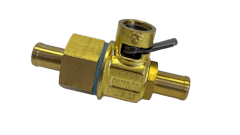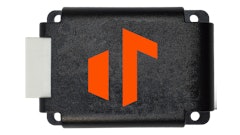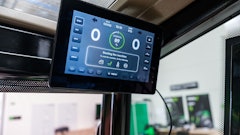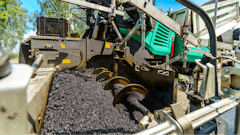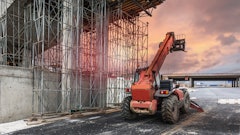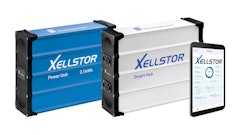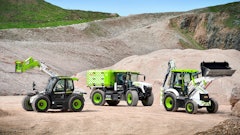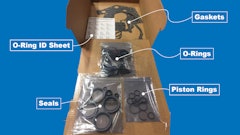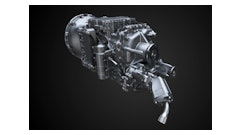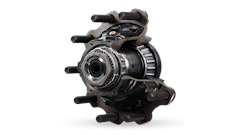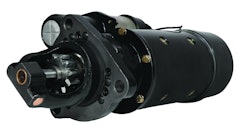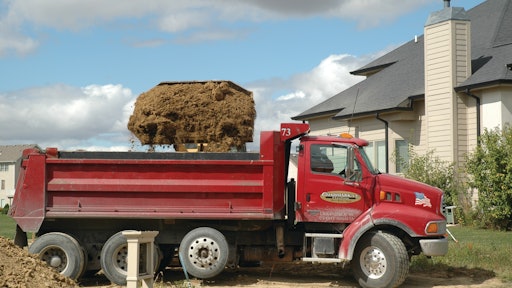
Maintenance issues involving wheel ends can occasionally lead to costly delays and potential safety risks. The National Transportation Safety Board estimates that anywhere from 750 to 1,050 wheel separations occur annually. While that's a small percentage compared to the number of trucks and trips on the road each year, it's a worst case scenario and it's too many for something that is preventable.
In the shop and on the road, maintenance staff and drivers need to work together to avoid wheel end issues and reduce downtime.
Here are a few recommendations for your maintenance checklist to help you strive to avoid this and all the other wheel end issues that, while less severe, can still mean time out-of-service for trucks in your fleet.
1. Ensure maintenance personnel and drivers are checking wheel bearings during regular inspections.
One way to reduce the odds of a downtime-inducing wheel end issue is by doubling up on a wheel bearing maintenance strategy. Early detection of wheel end problems can save your fleet from unnecessary downtime and costly emergency roadside repairs, but it takes diligence from maintenance teams and drivers to notice potential issues before they become problematic.
Maintenance personnel should automatically include bearing inspection by a qualified technician during scheduled vehicle preventative maintenance.
Drivers should look for bearing problems during pre- and post-trip vehicle safety inspections and while on the road. If something doesn't look right, they should feel comfortable telling a maintenance supervisor about it.
2. Know your wheel end types and how to maintain the bearings in them.
The fact that there are three different kinds of wheel bearing systems, and they all have different installation and adjustment procedures, can make it more difficult to recognize and address potential bearing challenges. Knowing the differences can help you customize your wheel bearing service regimen for the types you do have, which goes a long way in preventing wheel end issues.
Here are some helpful identifiers. It is worth providing a refresher on the subject to your maintenance team and drivers.
Adjustable Wheel Ends
Historically, the most common type, the adjustable wheel end system (see Figure 1) uses standard single-row bearings. The adjusting nut establishes the bearing setting.
While one advantage to adjustable wheel ends is that they are easily serviced in the field, the downside is that they cannot reliably achieve controlled preload compared to pre-adjusted and unitized systems.
Before installing new bearings on an adjustable wheel end, check the shaft for any signs of wear. A worn shaft can lead to bearing misalignment, which may reduce the bearing's service life.
To ensure proper cone seating, use a 0.002-inch (0.05mm) feeler gauge to check for any gap between the cone backface and the shaft shoulder.
Any damage to the cage of a bearing may cause problems very early in the service life of the bearing. Cages that show any deviation from their factory shape and roundness should not be used and the cone assembly should be replaced.
In addition, adjusting bearings too loose or too tight will shorten the bearings service life. Some estimates suggest that more than half of the bearings on the road today are adjusted incorrectly
If properly adjusted, the wheel end setting should not change significantly during early operation. But over time, small changes can result from bearing break-in and wear. Poor cleanliness and improper maintenance practices can increase wear and cause additional change in bearing setting.
For proper wheel end cleaning and maintenance procedures, refer to the Technology & Maintenance Council (TMC) Recommended Practice 622, Wheel Seal and Bearing Removal, Installation and Maintenance. Also follow the axle manufacturer's guidelines for wheel bearing service intervals.
Pre-Adjusted Wheel Ends
Pre-adjusted wheel end systems (see Figure 2) are supplied in two different ways. The components may be loose, or the bearings and seals may be supplied already pressed into the hub. The adjustment is achieved when the retention nut/hardware is installed.
A pre-adjusted wheel end assembly can be identified by a spacer between the inner and outer bearings. The pre-adjusted wheel end system, like the adjustable system, can be serviced in the field.
During routine service intervals, or when maintenance is required, be sure to thoroughly clean all the components and inspect the seal, bearings, hub and spacer for unusual wear or damage. Replace the seal whenever the hub is removed from the spindle.
Additionally, all the bearings (cone assemblies and cups) and the spacer should be replaced
whenever they exhibit any sign of distress or damage. The same type of lubricant or compatible original equipment manufacturer (OEM)-approved lubricant should be used during routine maintenance.
If you're wondering if there's anything that should not be done, the answer is "yes." Do not use the spacer if converting a pre-adjusted hub to a traditional adjustable wheel end system.
Also, do not use industry-standard components for pre-adjusted systems. If replacement parts are required, use OEM-specified service parts to maximize performance.
Do not reuse components that are damaged or excessively worn, especially the bearings, spacer, seal and spindle nuts.
Always follow the hub supplier's or OEM's service recommendations and procedures.
Unitized Wheel Ends
In unitized wheel end packaged systems, the bearings, seals and lubricant are pre-installed into the hub. The bearings are either integrated into the hub or pressed in as a separate cartridge.
The bearing adjustment is set during the manufacturing process and the nut acts to retain it on the spindle, making it easier to install. However, it is not possible to replace separate components, and the unitized wheel end isn't serviceable in the field. When one component wears out, the entire system needs to be replaced.
Warning: Do not attempt to disassemble and reassemble unitized wheel end hubs and bearing assemblies. Improper reassembly could lead to failure.
3. Always replace damaged bearings immediately.
In order to know it's time to replace bearing, you need to know how to identify that they are damaged. The most common types of damage occurring in wheel end bearings include:
- Dry, caked lube in the hub caps or any other internal cavity.
- Metal particles in the lube, hub caps, hubs or bearings.
- Heat discoloration on the bearings or any other internal component. Do not confuse heat discoloration, which is non-removable stain and metal flow, with lube staining that is easily removed with fine emery cloth.
- Evidence of the cups or cones spinning or turning (grooves on the cone backface, bore or spindle). See Figure 4.
- Visual wear on any other bearing surface.
- Any dents on the cage of the bearing assembly.
- Spalling (flaking away) of bearing material on races or roller bodies.
- Any raised metal or dents on the rollers or races.
Warnings:
- Failure to replace a bearing under the aforementioned circumstances can result in wheel separation creating a risk of serious bodily injury.
- Failure to follow the noted cautions could create a risk of injury.
- Do not use damaged bearings as their use can result in equipment damage.
- If a hammer and bar are used for installation or removal of a part, use a mild steel bar (e.g., 1010 or 1020 grade). Mild steel bars are less likely to cause release of high-speed fragments from the hammer or bar or the part being removed.
4. Replace cups and cones together.
When replacing tapered roller bearings in adjusted and pre-adjusted wheel ends, it's important to replace both the bearing cups and cones at the same time.
It might be tempting to keep the "good" half of the used set and pair it with a new mate, but the problem is that the old "good" component has a distinct pattern worn into its raceway. Mixing it with the new component may set up edge stresses along the races and result in premature bearing failure
Never spin a bearing with compressed air. The rolling elements may be forcefully expelled.
It's also recommended that the cup and cone be purchased from the same manufacturer, preferable as a matched set. That's because components purchased from two different manufacturers may have:
- Incompatible internal bearing profiles.
- Overall bearing width differences due to inconsistent tolerances.
- Different bearing ratings.
- Surface finish variations due to different manufacturing processes and technologies.
- Variations in steel quality, type, cleanliness and processing.
- Variations in worldwide bearing manufacturing quality.
In general, the best maintenance intervals for an operation will vary by fleet. To determine what's best for your operation, first look at the maintenance schedules and service life experiences for your truck/trailer wheel ends (brakes, hub caps, tires, seals, lubricant, bearings, spindle nuts, etc.). Then, choose components with performance records that complement your preventative maintenance programs.
If a component fails or requires unscheduled service, a shorter inspection interval may be required.
Warning: Failure to follow these warnings could create a risk of serious injury. Proper maintenance and handling practices are critical. Failure to follow installation instructions and to maintain proper lubrication can result in equipment failure.
Be advised: This article is not intended to substitute for the specific recommendations of your equipment suppliers. Every reasonable effort has been made to ensure the accuracy of the information contained in this writing, but no liability is accepted for errors, omissions or for any other reason.



